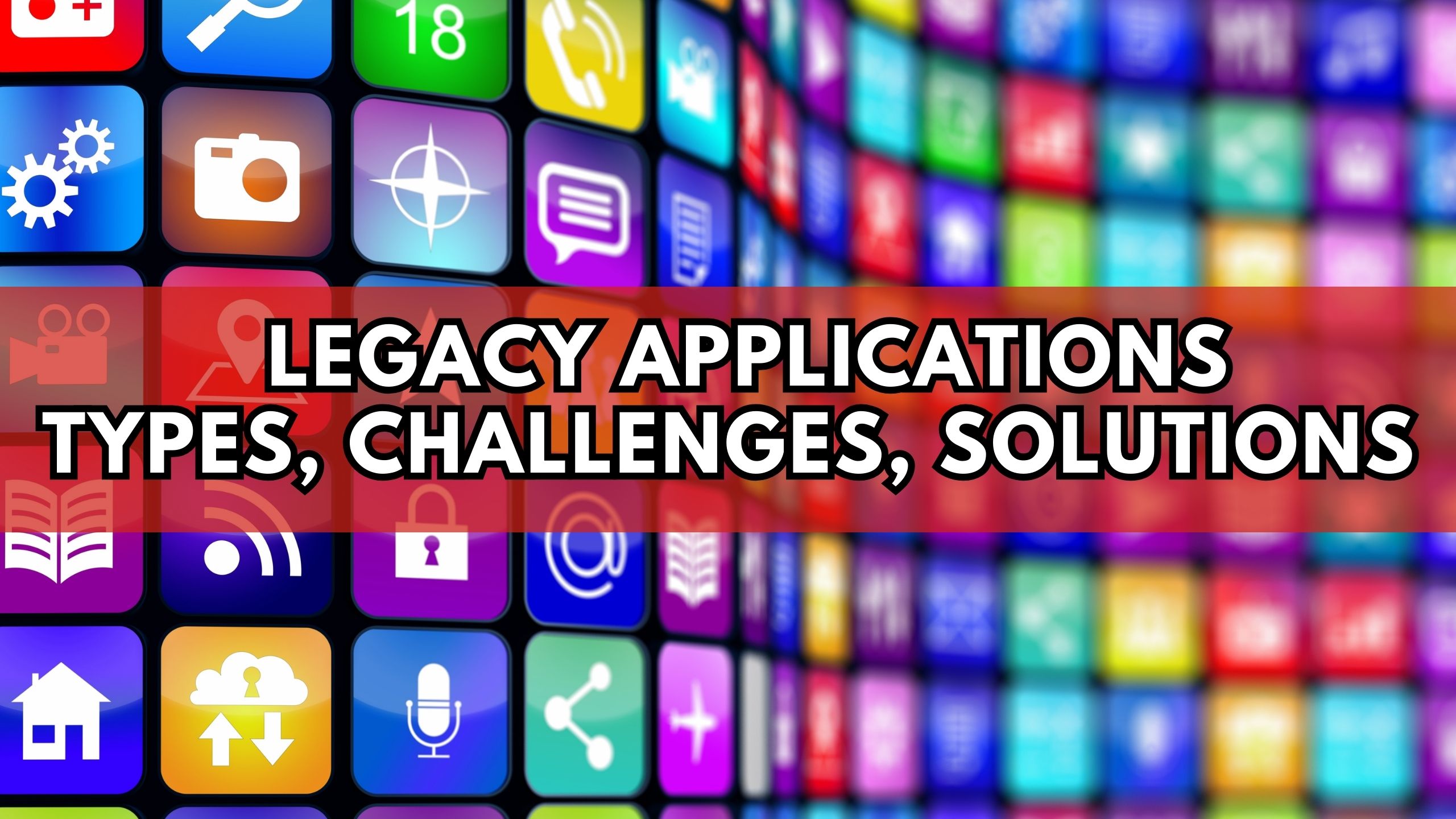Legacy Applications: Types, Challenges, Solutions
- WebOps Platforms Bug Tracking & Feedback Software Web Development & Design


Legacy Applications: Types, Challenges, Solutions
In the ever-evolving landscape of technology, legacy applications remain a significant aspect of many businesses. Understanding the types, challenges, and solutions associated with legacy applications is crucial for organizations aiming to adapt and thrive. In this comprehensive exploration, we delve into the intricacies of legacy applications and present solutions to overcome the challenges they pose.
1. Defining Legacy Applications
Legacy applications, by definition, are software systems that have been in use for an extended period, often decades. These applications may have been revolutionary in their time, but as technology progresses, they become outdated and cumbersome. Despite their age, many legacy applications are still mission-critical for businesses, making their proper understanding and management essential.
One of the primary characteristics of legacy applications is their monolithic structure, where all components are tightly coupled. This lack of modularity hinders the flexibility needed to adapt to changing business requirements. Additionally, legacy applications are typically built on older programming languages and frameworks, posing challenges for integration with modern technologies.
Despite their challenges, legacy applications often house valuable business logic and data. Recognizing this, organizations must find ways to preserve and leverage these assets while addressing the limitations of these aging systems.
2. Types of Legacy Applications
The classification of legacy applications is diverse, reflecting the multitude of technologies that have evolved over the years. Monolithic systems, a prevalent type, encapsulate the entire application in a single codebase, making updates and modifications arduous. Outdated databases, another category, may use obsolete data storage formats, creating compatibility issues with newer systems.
Unsupported software represents a type of legacy application that vendors no longer maintain or update. This lack of support exposes organizations to security vulnerabilities and compatibility challenges. By identifying these types, businesses can tailor their strategies for addressing the unique issues each category presents.
3. Challenges Posed by Legacy Applications
Legacy applications present a host of challenges that impact both operational efficiency and strategic innovation within organizations. Security vulnerabilities are a primary concern, as outdated systems are more susceptible to cyber threats due to unpatched vulnerabilities. Moreover, the high costs associated with maintaining and supporting legacy applications divert resources that could otherwise be invested in innovation.
Integrating legacy systems with modern technologies poses a significant challenge, hindering organizations from adopting agile and scalable solutions. The inherent complexity of these systems makes it difficult to align them with evolving business needs, limiting the organization’s ability to respond to market changes swiftly.
Over time, businesses may find themselves locked into legacy technologies, facing difficulties in finding skilled personnel who can maintain and support outdated systems. This talent gap further exacerbates the challenges associated with legacy applications, making strategic planning for their evolution paramount.
4. Solutions to Legacy Application Challenges
Modernization Strategies
Modernizing legacy applications involves adopting contemporary technologies and architectures to enhance functionality and scalability. This can include refactoring code, adopting cloud-native approaches, and migrating to microservices architecture. MuleSoft, a leading integration platform, facilitates this transition by providing tools for connecting applications, data, and devices.
Legacy Integration Platforms
Legacy integration platforms play a crucial role in bridging the gap between old and new systems. MuleSoft stands out by offering a unified integration platform that connects applications, data, and devices across on-premises and cloud environments. This seamless integration ensures a smooth transition from legacy systems to modern, agile architectures.
Containerization and Microservices
Containerization, exemplified by tools like Docker, allows organizations to encapsulate legacy applications into containers. This not only ensures portability across different environments but also facilitates the adoption of microservices architecture. Microservices enable the decomposition of monolithic applications into smaller, independently deployable services, fostering agility and scalability.
Automated Testing and DevOps
The adoption of automated testing and embracing DevOps practices, supported by tools like Jenkins, is integral to overcoming challenges associated with legacy applications. Automated testing accelerates the identification and resolution of issues during the development process, ensuring a smoother and more reliable transition. DevOps practices, including continuous integration and continuous delivery, enhance collaboration between development and operations teams, streamlining the deployment of updates and improvements.
Legacy Application Support
Specialized support services, such as those offered by BMC Software, play a vital role in addressing the ongoing maintenance and support needs of legacy applications. These services provide organizations with access to expertise in legacy systems, ensuring that critical applications remain secure, compliant, and optimized for performance.
Conclusion: Embracing Change for Future Success
In conclusion, understanding and addressing the challenges posed by legacy applications is essential for businesses striving to remain competitive and innovative. By implementing strategic solutions and leveraging modern technologies, organizations can navigate the complexities of legacy systems and pave the way for future success.
Unlock the Power of Modern SaaS Solutions with Subscribed.fyi
At Subscribed.fyi, we are committed to simplifying your journey through the world of SaaS tools. Unlock exclusive deals, save big on 100+ SaaS tools, and gain insights to streamline your subscription management. Sign up for free today and take control of your SaaS expenses effortlessly!
Benefit Summary:
- Unlock free member-only deals on 100+ SaaS tools.
- Effortlessly manage, track, and control all subscriptions in one centralized platform.
- Empower your decision-making with comprehensive insights about SaaS tools.
Check out Subscribed.fyi Deals!
Relevant Links:





